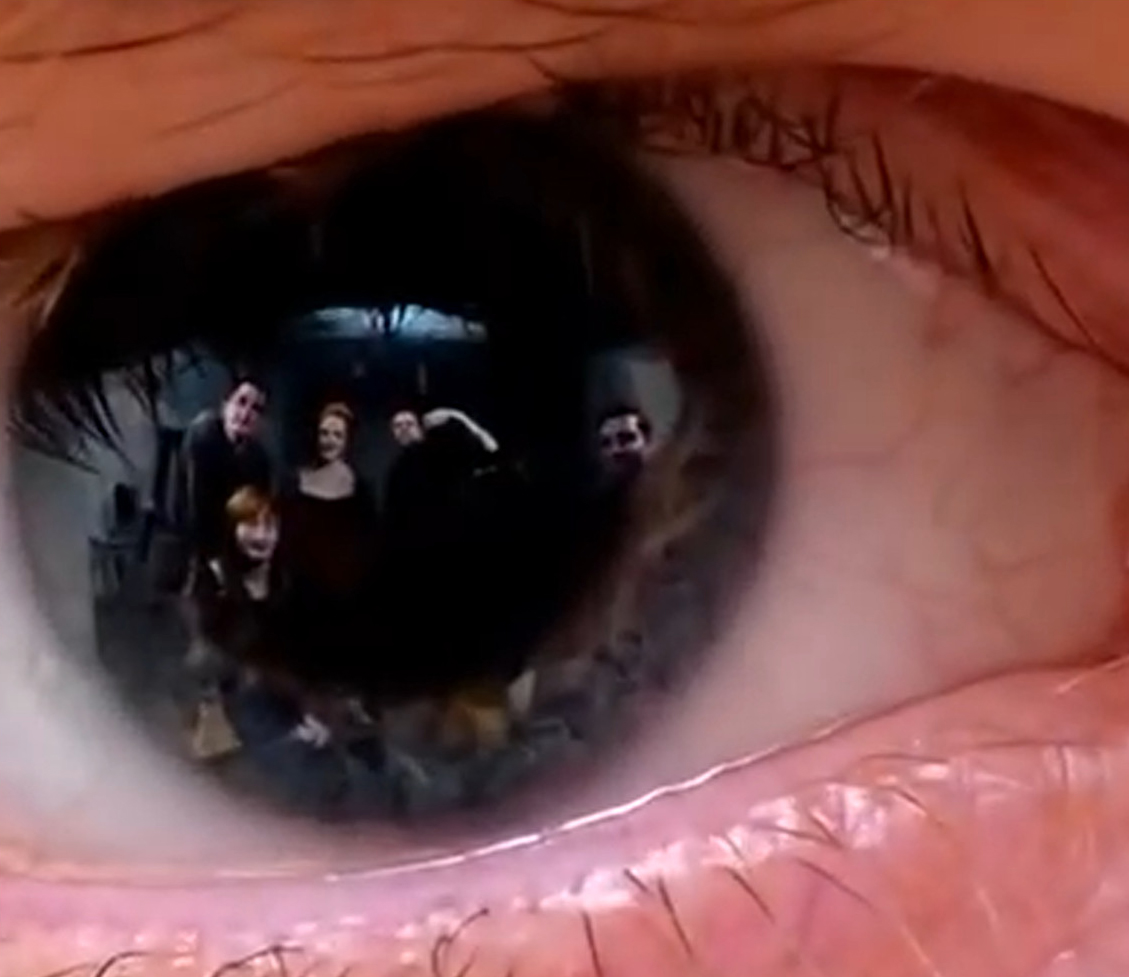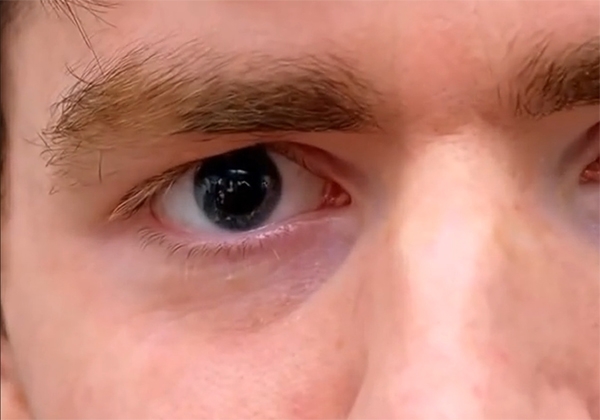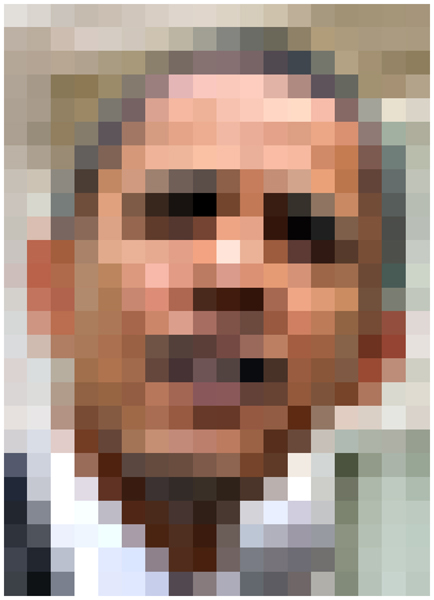You can listen to my radio series live every Monday on Moore in the Morning at 6:45 am
Take a picture of someone up-close and you might just be photographing yourself, reflected in their eyes. Research led by Dr. Rob Jenkins at the Department of Psychology at the University of York, England has proven that it is possible to zoom into a high resolution photograph and discover revealing images within the eyes of people staring back. The specific focus of his research has been to see if such images can be used by the police, who often seize cameras as evidence, to identify potential witnesses and suspects.
“The pupil of the eye is like a little black mirror” explains Jenkins, “but it’s very small, so you have to get in pretty close and you have to be able to adjust the contrast to make up for the fact that it’s black.”
It’s a tricky process, not just because details can be lost in the darkness of the eye, but also because of the way photographs lose quality each time you zoom into them. Police have used details reflected in eyes to discover simple clues about where a picture was taken, but the idea that you could get a clear shot of someone’s face was thought to be impossible.
Dr. Jenkins and collaborator Christie Kerr at the University of Glasgow, Scotland found that with good lighting conditions, a 39 MP camera, and a copy of Adobe Photoshop, you can indeed reveal the face of a photographer reflected in their subject’s eyes and also the faces of bystanders and participants standing nearby, even when these additional people are hidden within the peripheral of the eye and can be much smaller and lower in quality.
The bad news is that it only works when it’s a photograph of a person staring directly into the camera. This might seem useless, but in their research paper Jenkins and Kerr point out two crimes that meet the right conditions; kidnapping and child pornography.
Jenkins and Kerr admit that identifying faces from such crimes is going to be a challenge. In their experiments they started out with images that were 39 Megapixels in size, but after they zoomed in to find reflected faces, were left with cropped images that, on average, were just 322 pixels. The results are too blocky for a computer to match reliably.
Examples from the experiment: An original image, same image zoomed, and then the face foudn within.
To address this, the research team ran some experiments using university students to see how well they might be at identifying the found faces. When a computer tries to identify a face, it does so by comparing individual features, nose to nose, eyebrow to eyebrow.
“If you look at the computer algorithms that do very well” explains Jenkins, “they tend to rely on using extremely high-resolution images”.
Human beings, however, can deal with vague or changing faces far better, as long as it’s a face we’ve become familiar with over time.
“Identifying someone seems to be done (by humans) based not on a particular feature, but on the overall pattern of light-and-dark across the face if you like” says Jenkins, “where you’re not saying ‘well, the eyes are the same, the nose is the same, the mouth is the same, yeah it’s the same person’. You know, there’s something about the whole person, the configuration of features, that is important for this task.”
This is what allows you to recognize your friends when they’ve changed their appearance by not shaving, getting a haircut, a sun tan, etc.
Because this face is familiar to many, human can identify it where computers can’t
In their experiments with university students, they found that familiar faces were identified 90% of the time from the blurry reflection images. The suggestion is that for investigators working kidnapping and child pornography case, if they can find a witness who is familiar with the situation, there’s a good change they could identify the person found reflected within the eyes of a victim.
Sample photos given to students in the identification tests.
Dr. Jenkins and Christie Kerr plan to continue their research to see what further information can be gained, by combining images found in both eyes for stereo or 3D imagery or by analyzing revealed faces for their emotion state and interest through facial expressions, gaze direction, and posture. As cameras continue to grow in picture quality, especially those used in smartphones, it will only make their work that much easier to do.





